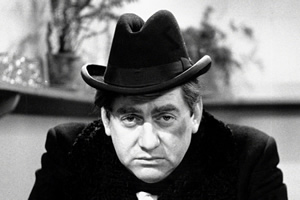Colouring Hancock
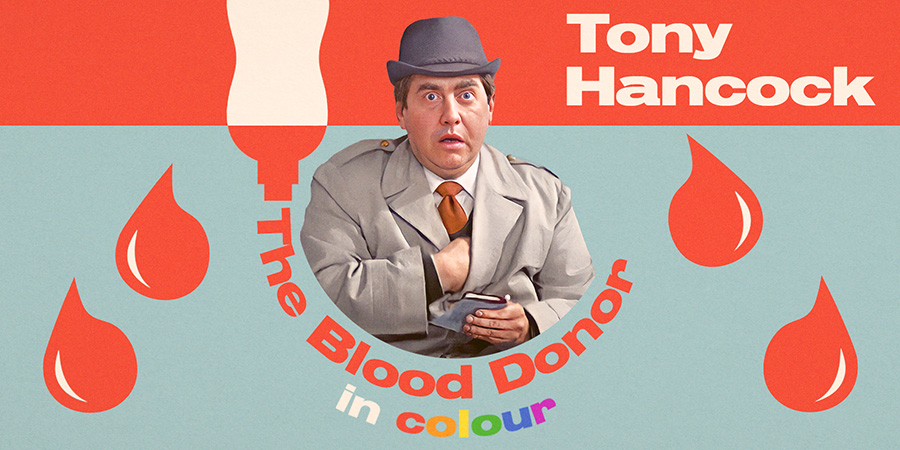
With two celebrated Hancock's Half Hour episodes restored, colourised and due to air this weekend on Gold, we spoke to lead colouriser Clayton Hickman about the project.
Taking on such an iconic comedy as Hancock's Half Hour must have been quite a daunting privilege. How did it come about?
I was very kindly recommended to the production by Paul Vanezis of the Doctor Who Restoration Team on the back of my endless stream of restorations and colourisations of old Doctor Who photos on Twitter. Which was very nice of him. My role was basically to colour everything in! Which is precisely as daunting and insane as it sounds!
As it transpired, it just wasn't possible for me to personally colour in every single frame that needed doing in the time available to us (the age old story of not quite enough time, not quite enough money), so we had a small team of additional artists trying to copy my colours from the keyframes onto swathes of similar-but-not-identical sub-frames. But we were all on an insanely steep learning curve through this whole process, and I think if and when we do some more of these, we'll know how to tackle everything more intelligently.
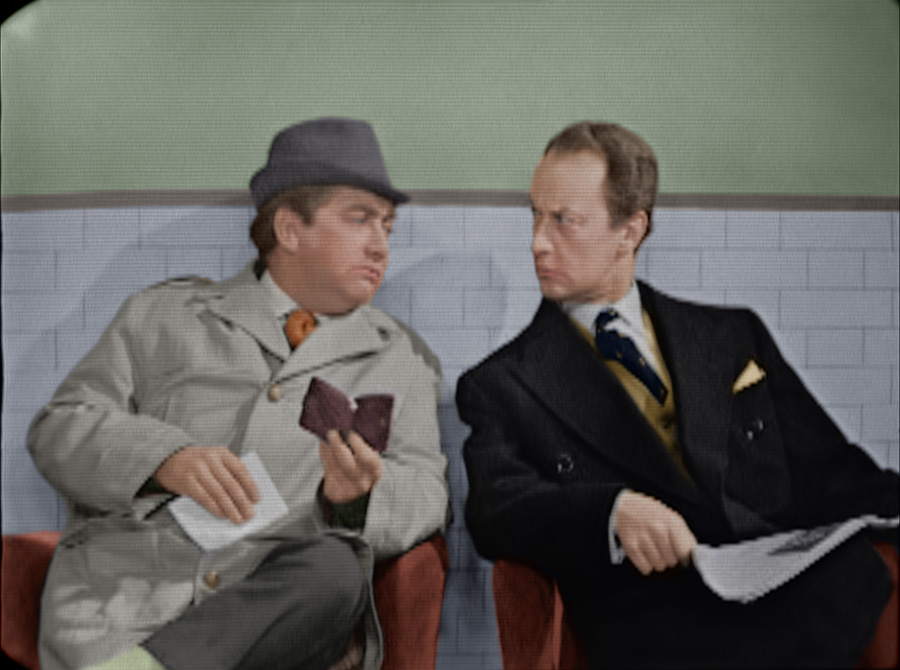
Did you experience any interesting issues?
The main issues were outside of our control. Basically the channel had chosen the episodes they wanted - and they were the most popular and famous episodes of Hancock's Half Hour, so fair enough - but they were possibly the two worst episodes to tackle from a colourisation point of view. Neither were particularly high quality telerecordings, and The Juryman [the original title for Twelve Angry Men] had about seven hundred people in every shot. Which was, bluntly, an absolute nightmare! But I'm glad we tackled that one second, as we'd learnt so much from The Blood Donor that the process wasn't quite as gruelling as it could have been.

We were lucky in that our technical wizard Peter Crocker managed, only a couple of weeks into the project, to acquire some new software that could interpolate more frames between the colourised keyframes than the software we had been intending to use. Which actually cut the workload down significantly. Unfortunately the general low resolution of the films themselves often made it very challenging for the software to actually recognise objects across frames - in all honesty I could barely make out what some objects were myself, as they'd appear fleetingly as a small, fuzzy collection of scanlines and film grain! 'Was that an inkwell? Or a pen holder? Or Tony's sleeve...?!'
Tell us a little about your work as a colouriser?
It's really just a case of trying to work out what looks 'right' sitting on top of a greyscale image. You have to do some research - 1950s hospitals and courtrooms in this case, plus a lot of old colour pictures of British people out and about to get an idea of contemporaneous fashion - but a huge amount of it is trying to decipher the shades of grey. You'll never get it completely right, just because so many colours look near-identical once you desaturate them. But it seemed a pretty sure thing that the hospital walls in The Blood Donor would be that particularly horrible institutional green that used to be everywhere. And there was a ton of wood on the set of The Juryman, so that was helpful.
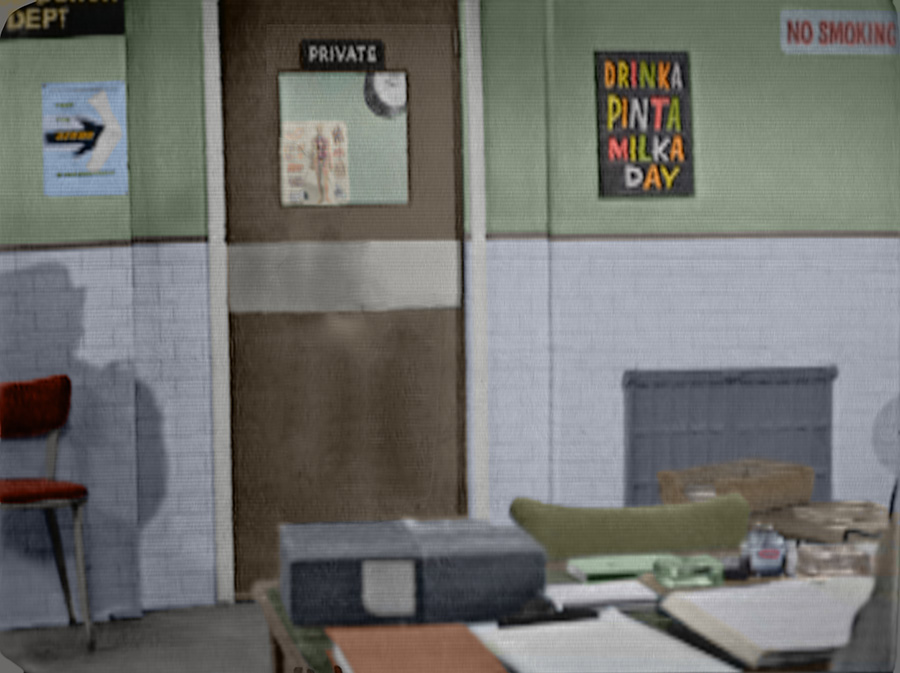
The hardest thing of all is skin tones. Getting those right probably took twice as long as anything else. And I'm sure a lot of the subtleties that I use in my photo restorations got lost in the interpolation between keyframes. But I put them in anyway just cos it seemed wrong not to! Which is probably why I was working those 7 day weeks... I was particularly pleased to find a copy of the genuine 'DRINKA PINTA MILKA DAY' poster, so I can guarantee that those colours at least are 100% authentic!
Because I knew the team would need to replicate my colours over additional frames, I often made extra work for myself by crafting backgrounds for particular shots, covering every inch of set visible across the whole sequence, so they could use it by shifting it around slightly to match whichever frame they were working on without having to colour every tiny background detail from scratch each time. And, to be honest, cos I rather liked looking at these faux-'empty set' photos once I'd made them!
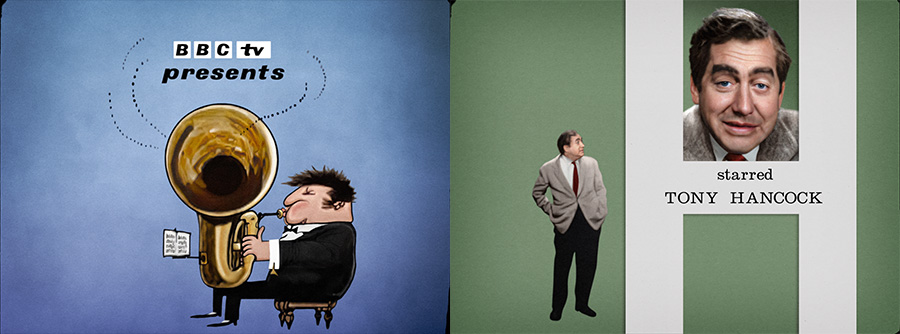
The other thing I did, just because I really wanted to, was to recreate all the title captions in HD, making damn sure they were as precise a match to the originals as humanly possible. Except in colour! I adore tracking down old typefaces so I was in my element. I also basically taught myself Adobe Premiere and After Effects in order to replicate the opening and closing 'H' animations, again in HD, because I knew they'd look so much nicer. Peter then subtly 'aged' them with film grain and weave, but again the difference in clarity from the old versions is pretty shocking. Similarly I created all-new ad bumpers in the same style as the titles for both episodes. Again just cos I didn't want some modern graphics crashing in halfway through. So I was thrilled when UKTV accepted them - even allowing the 'End of Part One' wording, which is virtually extinct today.
Do you use AI processes?
It would be impossible without AI assistance. It's almost impossible with it! I mean if you're Peter Jackson with millions of dollars and the best technical wizardry in the world, it's probably a piece of piss. For us mere mortals, however, it's a lot of hard slog colouring things in, then even more hard slog for Peter Crocker to get the software to play nicely and accurately interpolate all the frames between the several thousand colourised frames we supplied. It needs a ton of manual tweaking, and on several sequences I had to supply additional frames just to give the computer more of a chance to latch on to our colours and accurately track them across the sequence. I can't pretend to understand exactly what magic goes into it, but I know it isn't easy. I imagine it will get easier as time goes on, but just look at the hideous mess of purple and brown produced by any AI colourisation software at the moment, and you'll see we're still a very long way off this being a fully automated process.
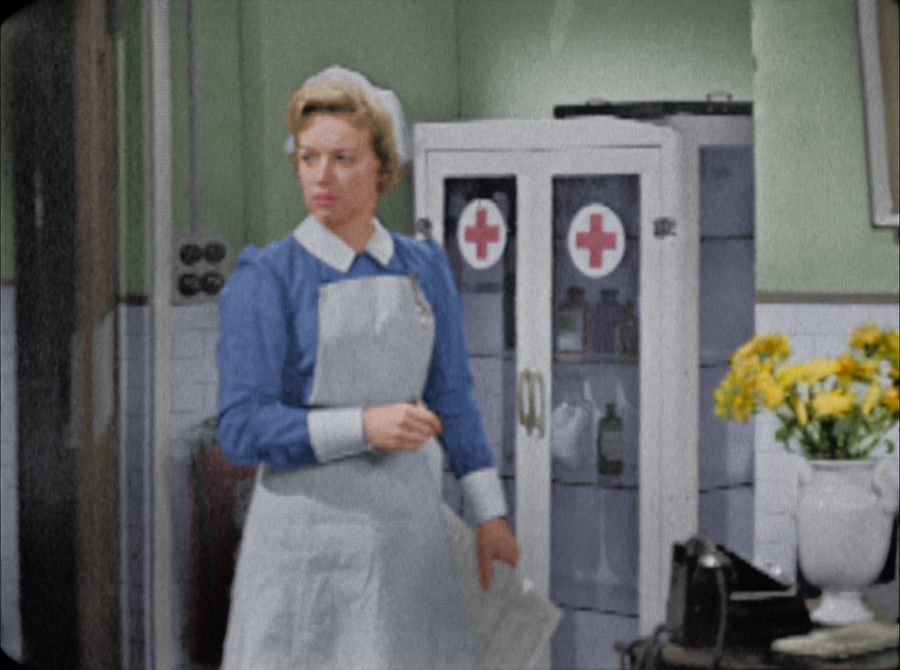
Do you think there's appetite/market for more restorations like this? What does it add to the experience of the viewer?
I really hope people like it. Because I'd love to do more. Everyone at Studio Crook have been so lovely to work with, and it's genuinely been one of the happiest experiences in my career. But also one of the hardest. We all honestly worked our little socks off on this project. And it was such a long slog. I was sweatily colouring in frames of Tony when the temperatures reached over 40°C in July and still colouring in frames of Tony when we were pushing freezing in November. And a lot of the time I was working 7 day weeks just to keep on top of it all. But it was incredibly rewarding to see the results. It isn't perfect - I wish we could have had a couple more months to finesse everything. But it's so much better than I expected. And this is from someone who generally hates everything he ever does! My big hope is that the viewers just forget they're watching a colourisation. These are genuinely brilliant pieces of television anyway, and all we can hope to do is slightly enhance the viewing experience. And maybe draw in some younger people who find black and white stuff a challenge to sit through.
Even if you don't like them, maybe pretend you do and then hopefully we can do some more and perhaps you'll like those a bit better?
There are a lot of people who say "just leave it alone"; cries of sacrilege and such, from viewers who are monochrome purists and don't want anything touched...
I'm very much of the opinion that as long as the originals are still there, there's nothing to complain about. Nobody is trying to replace anything! The black and white versions - be they episodes or photographs - don't instantly explode into sparks and dust the second you add colour! And in this case, if you don't like the colours, turn them down on your telly and you now have two hugely remastered versions of the episodes that look better than any copy you've seen since original broadcast.
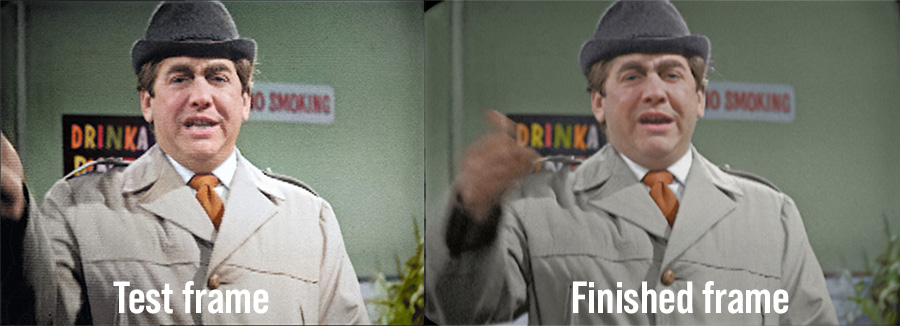
We went back to the telerecording negatives, they were extensively cleaned. Mark Ayres did wonders with the soundtracks, the VidFIRE process has restored the original video look, and if you compare them to the most recent DVD versions it's night and day. It really is. I did my original test frames on DVD screengrabs. And the sheer difference when I got to use the newly restored frames slightly blew my mind.
The Blood Donor and Twelve Angry Men first aired on Gold on Saturday 14th January 2023 from 10pm.
Help us publish more great content by becoming a BCG Supporter. You'll be backing our mission to champion, celebrate and promote British comedy in all its forms: past, present and future.
We understand times are tough, but if you believe in the power of laughter we'd be honoured to have you join us. Advertising doesn't cover our costs, so every single donation matters and is put to good use. Thank you.
Love comedy? Find out moreThe Tony Hancock Collection

This collection contains all 37 surviving episodes, from 1956 to 1961, of the classic TV sitcom written by Galton and Simpson, featuring East Cheam's most famous resident, Tony Hancock, alongside supporting stars including Sid James and Kenneth Williams.
Sadly, 17 episodes from the series are missing believed wiped, but their scripts are included in PDF form amongst the set's extras.
First released: Monday 22nd October 2007
- Distributor: 2 Entertain
- Region: 2
- Discs: 8
- Minutes: 1,083
- Subtitles: English
- Catalogue: BBCDVD2168
![]() Buy and sell old and new items
Buy and sell old and new items
Search for this product on eBay
BCG may earn commission on sales generated through the links above.

